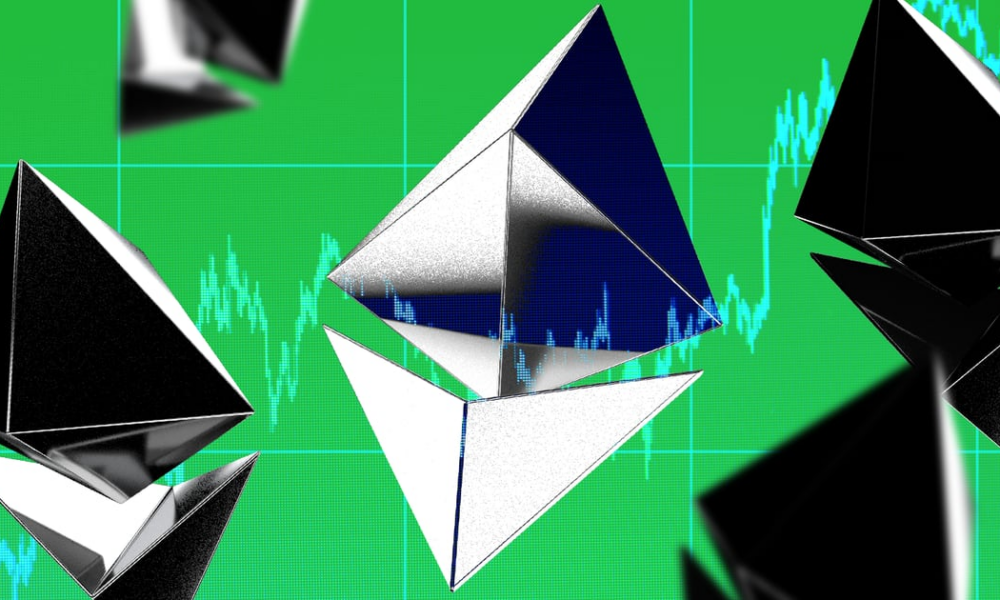Ethereum
As Ethereum grows, its fees fall. Here’s why it’s a problem – DL News

- Ethereum mainnet usage is not increasing with the price of Ether like before.
- Over the past month, the network has created more tokens than it burned thanks to transaction fees.
When Ethereum’s Ether token hit an all-time high of $3,800 in May 2021, the increased on-chain activity caused transaction fees to skyrocket as users piled in.
They have become accustomed to spending over $100 just to trade tokens on-chain. But many didn’t care: there was money to be made.
Fast forward to 2024, and Ethereum is revisiting these heady prices for the first time in over two years. But this time it’s different.
Ether soared to over $3,800 hours after Bloomberg analysts revised the probability of an Ethereum ETF spot approval from 25% to 75%.
Despite the rise in prices since the recent Ethereum Spot ETF Turnaroundtransaction fees on the leading smart contract network remain low – only slightly higher than they were at the height of the 2022 crypto winter.
This is a sign that the demand for transactions on Ethereum is no longer what it used to be.
So what gives?
Increased transaction efficiency, coupled with an exodus of activity to Ethereum’s less expensive Layer 2 networks like Base and Arbitrum, have helped moderate demand and make Ethereum cheaper to use.
While this is great for Ethereum users, there are downsides.
Join the community to receive our latest stories and updates
With transaction fees falling on the Ethereum mainnet, the network is failing to burn – crypto speaks for destroy – enough tokens to make the supply of Ether deflationary.
Above all, if fees remain low, this could call into question the network’s economic model.
Ethereum becoming too efficient?
When the Ethereum network destroys more tokens through transaction fees than it rewards validators for processing those transactions, the total supply of Ether decreases and becomes deflationary.
This situation is favorable for the network because it rewards those who help keep the network running without inflating the supply of Ether.
But if users don’t spend enough Ether on transactions, the supply of Ether will swell indefinitely, breaking the network’s business model.
Continued inflation, while unlikely, would devalue Ether and make it less attractive for users to lock into validators to secure the network. After all, it’s better to spend than save an asset that keeps printing units.
So far, ether supply has Shrunk in total since Ethereum reduced the issuance of new Ether with its September 2022 Merge upgrade.
But that is changing. Over the past month, Ethereum’s lack of activity has allowed the network to add over 50,000 Ether, worth $190 million.
If activity and fees spent on Ethereum do not resume, the supply of Ether will swell by 0.5% – or $2.2 billion – over the coming year.
Where do the fees go?
In recent years, many Ethereum users have moved to so-called layer 2 networks.
Layer 2s like Arbitrum, Optimism, and Base provide Ethereum compatibility, faster transactions, and lower costs, while relying on the Ethereum mainnet for security.
Activity exploded. Since the start of 2024, Layer 2 trading activity and volume have reached unprecedented heights.
These Layer 2s still pay transaction fees on the Ethereum mainnet, but only a fraction of what it would cost if everyone using Layer 2 sent transactions on the Ethereum mainnet.
In addition, the march of Ethereum Dencun upgrade reduce the already low cost of publishing Layer 2 transaction data, thereby further reducing demand on the mainnet.
Elsewhere, developers are improving the cost that governs Ethereum transactions. The result is reduced gas costs, meaning users pay fewer fees for the same types of transactions.
With Ethereum more efficient than ever and a thriving Layer 2 ecosystem, how will the network avoid economic turmoil?
Tim Craig is DL News’ DeFi correspondent based in Edinburgh. Contact us with advice at tim@dlnews.com.
